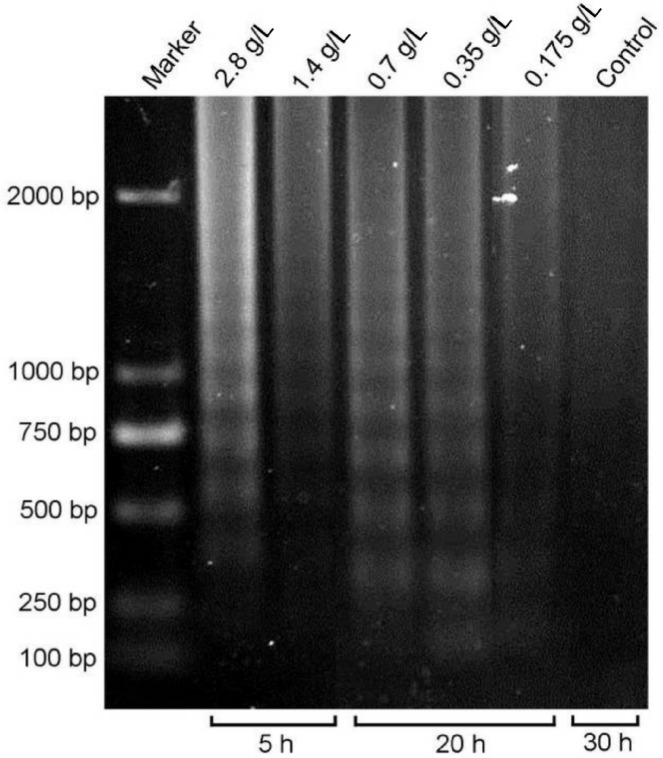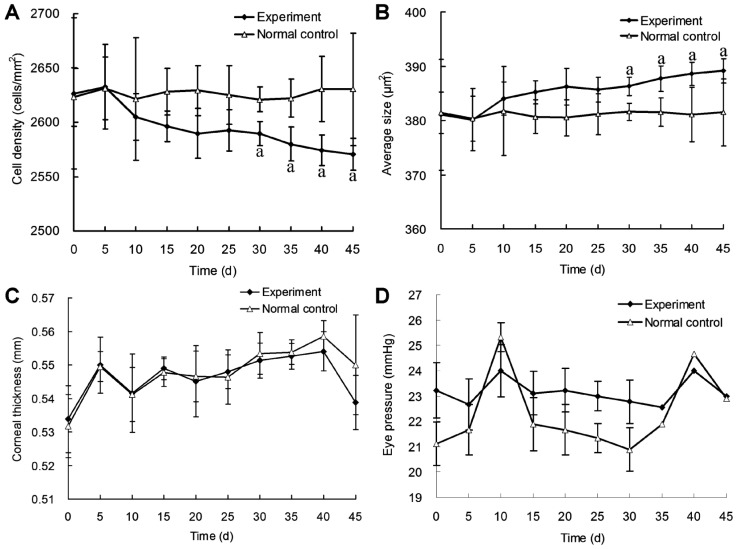
| Size | Price | Stock | Qty |
|---|---|---|---|
| 50mg |
|
||
| 100mg |
|
||
| 250mg |
|
||
| 500mg |
|
||
| 1g |
|
||
| Other Sizes |
Purity: ≥98%
Betaxolol HCl (Betoptima; Kerlone; Betoptic; Kerlon; SL-75212; ALO-1401-02; ALO140102), the hydrochloride salt of Betaxolol, is a potent beta-1/β1 adrenergic receptor antagonist with antihypertensive effects. It inhibits the beta-1/β1 adrenergic receptor with an IC50 of 6 μM. Currently, betaxolol is approved to treat glaucoma and hypertension.
| Targets |
β1-adrenergic receptor ( IC50 = 6 μM )
|
||
|---|---|---|---|
| ln Vitro |
|
||
| ln Vivo |
|
||
| Cell Assay |
Dissociated cortical cells from 16–18-day-old fetal rats are grown in 35 mm dishes in DMEM supplemented with L-glutamine (4 mM), glucose (6 g/L), penicillin (100 U/mL), streptomycin (100 μg/mL), and 10% hormonal supplemented medium that contains sodium selenite (0.3 μM), progesterone (0.2 μM), putrescine (600 μM), transferrin (1 mg/mL), insulin (250 μg/mL), putrescine (600 μM), progesterone (0.2 μM), and estradiol (0.1 pM). After that, the cultures are moved to a culture medium without hormone supplements. After adding L-glutamate, the mixture is incubated under normoxic conditions for an additional 4 hours. L-glutamate and betaxolol are added to the cultures simultaneously. In anoxic conditions, 95% N2/5% CO2 for 5 hours at 37 °C, are applied to the cultures in other experiments. Anoxia occurs first, and then bexolol. Next, the cells are swapped out for normoxic ones (95% O2/5% CO2) for three hours in order to achieve reoxygenation. Measuring the release of lactate dehydrogenase (LDH) into the supernatant of cell cultures following hypoxia/reoxygenation or glutamate exposure is a useful method for evaluating cellular injury. By monitoring NADH metabolism for two minutes at 340 nm, LDH activity is measured spectrophotometrically.
|
||
| Animal Protocol |
|
||
| ADME/Pharmacokinetics |
Absorption, Distribution and Excretion
Absorption of an oral dose is complete. There is a small and consistent first-pass effect resulting in an absolute bioavailability of 89% ± 5% that is unaffected by the concomitant ingestion of food or alcohol. Metabolism / Metabolites Primarily hepatic. Approximately 15% of the dose administered is excreted as unchanged drug, the remainder being metabolites whose contribution to the clinical effect is negligible. Biological Half-Life 14-22 hours |
||
| Toxicity/Toxicokinetics |
Hepatotoxicity
Betaxolol therapy has been associated with a low rate of mild-to-moderate elevations of serum aminotransferase levels which are usually asymptomatic and transient and resolve even with continuation of therapy. There have been no well documented cases of clinically apparent, acute liver injury attributable to betaxolol. Thus, hepatotoxicity due to betaxolol must be very rare, if it occurs at all. Most commonly used beta-blockers have been linked to rare instances of clinically apparent liver injury, typically with onset within 2 to 12 weeks, a hepatocellular pattern of liver enzyme elevations, rapid recovery on withdrawal, and little evidence of hypersensitivity (rash, fever, eosinophilia) or autoantibody formation. Likelihood score: E (unlikely cause of clinically apparent liver injury). Effects During Pregnancy and Lactation ◉ Summary of Use during Lactation Because of its relatively extensive excretion into breastmilk and minimal reported experience during breastfeeding, other beta-blocking agents may be preferred for systemic use, especially while nursing a newborn or preterm infant. Ophthalmic use of betaxolol by the mother should pose little risk to the breastfed infant, although some guidelines state that gel formulations are preferred over solutions. To substantially diminish the amount of drug that reaches the breastmilk after using eye drops, place pressure over the tear duct by the corner of the eye for 1 minute or more, then remove the excess solution with an absorbent tissue. ◉ Effects in Breastfed Infants A study of mothers taking beta-blockers during nursing found a numerically, but not statistically significant increased number of adverse reactions in those taking any beta-blocker. Although the ages of infants were matched to control infants, the ages of the affected infants were not stated. None of the mothers were taking betaxolol. Beta-adrenergic blocking drugs with breastmilk excretion characteristics similar to betaxolol have caused adverse effects in breastfed newborns. ◉ Effects on Lactation and Breastmilk Relevant published information on the effects of beta-blockade or betaxolol during normal lactation was not found as of the revision date. A study in 6 patients with hyperprolactinemia and galactorrhea found no changes in serum prolactin levels following beta-adrenergic blockade with propranolol. Protein Binding 50% |
||
| References | |||
| Additional Infomation |
Betaxolol Hydrochloride is the hydrochloride salt form of betaxolol, a beta-1-selective adrenergic receptor antagonist without intrinsic sympathomimetic activity. Betaxolol hydrochloride acts on the heart and circulatory system and decreases cardiac contractility and rate, thereby reducing cardiac output. When applied topically in the eye, it lowers intraocular pressure by reducing aqueous humor secretion.
A cardioselective beta-1-adrenergic antagonist with no partial agonist activity. See also: Betaxolol (has active moiety); Betaxolol hydrochloride; chlorthalidone (component of); Betaxolol hydrochloride; pilocarpine hydrochloride (component of). Glaucoma is described, and the chemistry, pharmacology, pharmacokinetics, clinical efficacy, adverse effects, and dosage and administration of betaxolol and levobunolol in comparison with timolol are reviewed. Betaxolol and levobunolol are two beta-adrenergic blocking agents being marketed as ophthalmic solutions for treatment of primary open-angle glaucoma (POAG) and ocular hypertension (OHT). Betaxolol is a relatively cardioselective beta-adrenergic blocker, while levobunolol is a nonselective beta-adrenergic blocking agent. Double-blind comparative trials have suggested that betaxolol has an equal to slightly lower efficacy and levobunolol has equal efficacy in reducing intraocular pressure (IOP) compared with timolol, the first ophthalmic beta blocker. A mean reduction in intraocular pressure of 15-35% occurs with both betaxolol and levobunolol and is reported to be maintained with prolonged use. Betaxolol is associated with a higher (25%) incidence of local ocular adverse reactions than timolol. However, betaxolol produces less systemic beta 2- and possibly beta 1-adrenergic receptor blockade than either timolol or levobunolol. Betaxolol may be relatively safer to use in patients with reactive airway disease than either timolol or levobunolol. Levobunolol causes a similar to greater incidence of local ocular adverse reactions and similar systemic beta blockade compared with timolol. Levobunolol may possibly be longer acting than timolol, allowing more patients to be controlled by once-daily dosing. Betaxolol and levobunolol appear to be similar to timolol in controlling IOP in patients with POAG and OHT; additional experience with these agents is needed to assess the advantages and disadvantages of each agent.[2] |
| Molecular Formula |
C18H30CLNO3
|
|
|---|---|---|
| Molecular Weight |
343.89
|
|
| Exact Mass |
343.191
|
|
| Elemental Analysis |
C, 62.87; H, 8.79; Cl, 10.31; N, 4.07; O, 13.96
|
|
| CAS # |
63659-19-8
|
|
| Related CAS # |
Betaxolol; 63659-18-7; Levobetaxolol hydrochloride; 116209-55-3; Betaxolol-d7 hydrochloride; 1219802-92-2; 1189957-99-0; 93221-48-8 (S-isomer free base); 116209-55-3 (S-isomer HCl)
|
|
| PubChem CID |
107952
|
|
| Appearance |
White to off-white solid powder
|
|
| Boiling Point |
448ºC at 760 mmHg
|
|
| Flash Point |
224.7ºC
|
|
| LogP |
3.586
|
|
| Hydrogen Bond Donor Count |
3
|
|
| Hydrogen Bond Acceptor Count |
4
|
|
| Rotatable Bond Count |
11
|
|
| Heavy Atom Count |
23
|
|
| Complexity |
286
|
|
| Defined Atom Stereocenter Count |
0
|
|
| SMILES |
Cl[H].O(C([H])([H])C([H])([H])C1C([H])=C([H])C(=C([H])C=1[H])OC([H])([H])C([H])(C([H])([H])N([H])C([H])(C([H])([H])[H])C([H])([H])[H])O[H])C([H])([H])C1([H])C([H])([H])C1([H])[H]
|
|
| InChi Key |
CHDPSNLJFOQTRK-UHFFFAOYSA-N
|
|
| InChi Code |
InChI=1S/C18H29NO3.ClH/c1-14(2)19-11-17(20)13-22-18-7-5-15(6-8-18)9-10-21-12-16-3-4-16;/h5-8,14,16-17,19-20H,3-4,9-13H2,1-2H3;1H
|
|
| Chemical Name |
1-[4-[2-(cyclopropylmethoxy)ethyl]phenoxy]-3-(propan-2-ylamino)propan-2-ol;hydrochloride
|
|
| Synonyms |
|
|
| HS Tariff Code |
2934.99.9001
|
|
| Storage |
Powder -20°C 3 years 4°C 2 years In solvent -80°C 6 months -20°C 1 month Note: Please store this product in a sealed and protected environment, avoid exposure to moisture. |
|
| Shipping Condition |
Room temperature (This product is stable at ambient temperature for a few days during ordinary shipping and time spent in Customs)
|
| Solubility (In Vitro) |
|
|||
|---|---|---|---|---|
| Solubility (In Vivo) |
Solubility in Formulation 1: ≥ 2.5 mg/mL (7.27 mM) (saturation unknown) in 10% DMSO + 40% PEG300 + 5% Tween80 + 45% Saline (add these co-solvents sequentially from left to right, and one by one), clear solution.
For example, if 1 mL of working solution is to be prepared, you can add 100 μL of 25.0 mg/mL clear DMSO stock solution to 400 μL PEG300 and mix evenly; then add 50 μL Tween-80 to the above solution and mix evenly; then add 450 μL normal saline to adjust the volume to 1 mL. Preparation of saline: Dissolve 0.9 g of sodium chloride in 100 mL ddH₂ O to obtain a clear solution. Solubility in Formulation 2: ≥ 2.5 mg/mL (7.27 mM) (saturation unknown) in 10% DMSO + 90% (20% SBE-β-CD in Saline) (add these co-solvents sequentially from left to right, and one by one), clear solution. For example, if 1 mL of working solution is to be prepared, you can add 100 μL of 25.0 mg/mL clear DMSO stock solution to 900 μL of 20% SBE-β-CD physiological saline solution and mix evenly. Preparation of 20% SBE-β-CD in Saline (4°C,1 week): Dissolve 2 g SBE-β-CD in 10 mL saline to obtain a clear solution. View More
Solubility in Formulation 3: ≥ 2.5 mg/mL (7.27 mM) (saturation unknown) in 10% DMSO + 90% Corn Oil (add these co-solvents sequentially from left to right, and one by one), clear solution. Solubility in Formulation 4: Saline: 30 mg/mL Solubility in Formulation 5: 130 mg/mL (378.03 mM) in PBS (add these co-solvents sequentially from left to right, and one by one), clear solution; with ultrasonication. |
| Preparing Stock Solutions | 1 mg | 5 mg | 10 mg | |
| 1 mM | 2.9079 mL | 14.5395 mL | 29.0791 mL | |
| 5 mM | 0.5816 mL | 2.9079 mL | 5.8158 mL | |
| 10 mM | 0.2908 mL | 1.4540 mL | 2.9079 mL |
*Note: Please select an appropriate solvent for the preparation of stock solution based on your experiment needs. For most products, DMSO can be used for preparing stock solutions (e.g. 5 mM, 10 mM, or 20 mM concentration); some products with high aqueous solubility may be dissolved in water directly. Solubility information is available at the above Solubility Data section. Once the stock solution is prepared, aliquot it to routine usage volumes and store at -20°C or -80°C. Avoid repeated freeze and thaw cycles.
Calculation results
Working concentration: mg/mL;
Method for preparing DMSO stock solution: mg drug pre-dissolved in μL DMSO (stock solution concentration mg/mL). Please contact us first if the concentration exceeds the DMSO solubility of the batch of drug.
Method for preparing in vivo formulation::Take μL DMSO stock solution, next add μL PEG300, mix and clarify, next addμL Tween 80, mix and clarify, next add μL ddH2O,mix and clarify.
(1) Please be sure that the solution is clear before the addition of next solvent. Dissolution methods like vortex, ultrasound or warming and heat may be used to aid dissolving.
(2) Be sure to add the solvent(s) in order.
| NCT Number | Recruitment | interventions | Conditions | Sponsor/Collaborators | Start Date | Phases |
| NCT01660620 | Completed | Drug: topical betaxolol Drug: Betaxolol |
Development of Side Effects From Betaxolol |
Smith-Kettlewell Eye Research Institute |
April 2011 | Phase 1 |
| NCT00061542 | Completed | Drug: BETOPTIC S (betaxolol HCl) Drug: Timolol Gel-forming Solution (TGFS) |
Glaucoma Ocular Hypertension |
Alcon Research | January 2003 | Phase 3 |
| NCT02617459 | Completed | Drug: Levobetaxolol eye drops Drug: Betaxolol eye drops |
Primary Open-angle Glaucoma Ocular Hypertension |
Zhaoke (Guangzhou) Ophthalmology Pharmaceutical Ltd. |
January 4, 2019 | Phase 3 |
 |
|---|
 |
 |